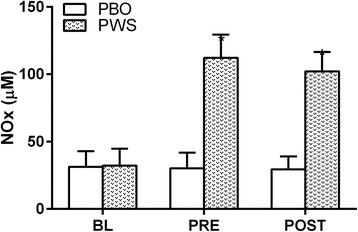Figures & data
Table 1 Pre-workout supplement (Reckless™) ingredients and ingredient amounts consumed per serving
Table 2 Subject Characteristics
Table 3 Repetitions performed and load lifted by set for leg extensor exercise to failure at 30 and 80% of 1-repetition maximum
Fig. 1 Near infrared spectroscopy variable responses during leg extensor exercise. ANOVA revealed no main effect of treatment or interaction with independent variables. Thus, a) minimum oxygenated hemoglobin (Min O2Hb), b) maximum deoxygenated hemoglobin (Max HHb), c) minimum O2Hb and HHb difference (Min HbDiff), and d) maximum total hemoglobin (Max tHb) are presented as mean values ± standard deviation for low (30% of 1RM) and high (80% of 1RM) load conditions for each set of leg extensor exercise. Relevant ANOVA p-values regarding set and load variables are presented within each panel. When a significant set*load interaction was found, post-hoc analysis with Bonferroni correction was employed for between intensity differences within each set. *, significantly different from 30% load condition (p < 0.0125)
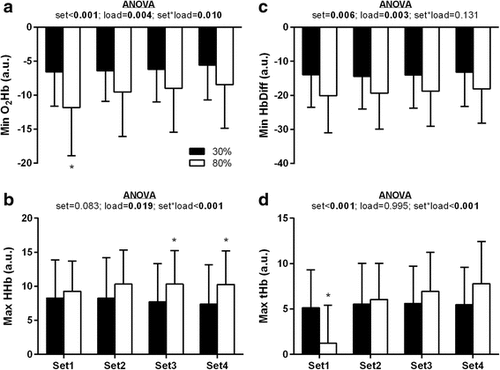
Fig. 2 Near infrared spectroscopy (NIRS) variable responses between sets of leg extensor exercise. Maximum (Max) a) oxygenated hemoglobin (O2Hb), b) deoxygenated hemoglobin (HHb), c) total hemoglobin (tHb), d) O2Hb and HHb difference (HbDiff) and minimum (Min) e) O2Hb, f) HHb, g) tHb and h) HbDiff) are presented as mean values ± standard deviation for low (30% of 1RM) and high (80% of 1RM) load conditions for each set of leg extensor exercise. Relevant ANOVA p-values regarding set and load variables are presented within each panel. When a significant set*load interaction was found, post-hoc analysis with Bonferroni correction was employed for between load condition differences within each set. *, significantly different from 30% load condition (p < 0.0167)

Fig. 3 Minimum deoxygenated hemoglobin (Min HHb) across all leg extension exercise rest intervals and loads by treatment. ANOVA revealed a significant main effect of treatment (p < 0.05). Data are presented as individual values with solid bars indicating mean values ± standard deviation. *, significantly different from PBO (p < 0.05)
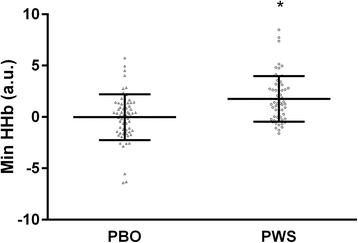
Fig. 4 Heart rate (HR) and blood pressure (BP) values (mean ± standard devation) at baseline (BL), 45-min post ingestion of pre-workout supplement (PWS) (i.e., pre-leg extensor exercise; PRE), and 5-min post-leg extensor exercise (POST) for each load condition (i.e., 30 and 80% of 1RM) and treatment (i.e., placebo [PBO] and PWS). a) HR, b) systolic BP (SBP), c) diastolic BP (DBP), and d) mean arterial pressure (MAP). ANOVA revealed no main effects of load or its interaction with other independent variables (p > 0.05). Relevant ANOVA p-values regarding time (i.e., time point) and treatment variables are presented within each panel
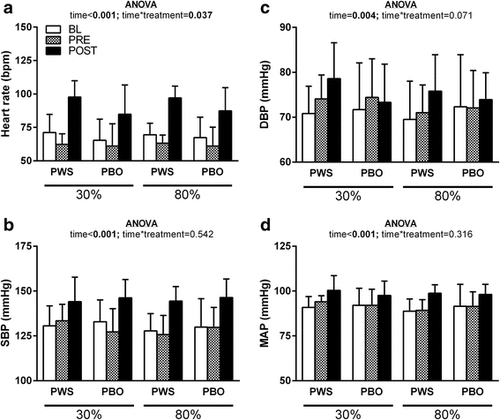
Fig. 5 Femoral artery diameter (panel a) and femoral artery blood flow (panel b) values (mean ± standard deviation) at baseline (BL), 45-min post ingestion of pre-workout supplement (PWS) (i.e., pre-leg extensor exercise; PRE), and 5-min post-leg extensor exercise (POST) for each load condition (i.e., 30 and 80% of 1RM) and treatment (i.e., placebo [PBO] and PWS). ANOVA revealed a 3-way interaction of time, load and treatment (p < 0.05) and post-hoc analysis with Bonferroni correction was employed to evaluate between treatment differences at each time point for each leg extensor exercise load condition. *, significantly different from PBO at the same time point within the 80% load condition (p < 0.008)
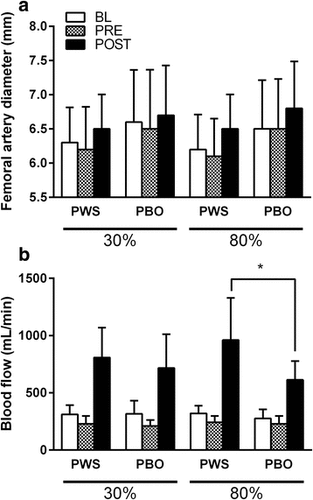
Fig. 6 Plasma nitrate and nitrite (NOx) values (mean ± standard deviation) at baseline (BL), 45-min post ingestion of pre-workout supplement (PWS) (i.e., pre-leg extensor exercise; PRE), and 5-min post-leg extensor exercise (POST) across leg-extensor exercise load conditions (i.e., 30 and 80% of 1RM) for each treatment (i.e., placebo [PBO] and PWS). ANOVA revealed a significant time*treatment interaction (p < 0.05) and post-hoc comparisons were performed using Bonferroni correction for multiple comparisons. *, significantly different from PBO at the same time point (p < 0.0167)
